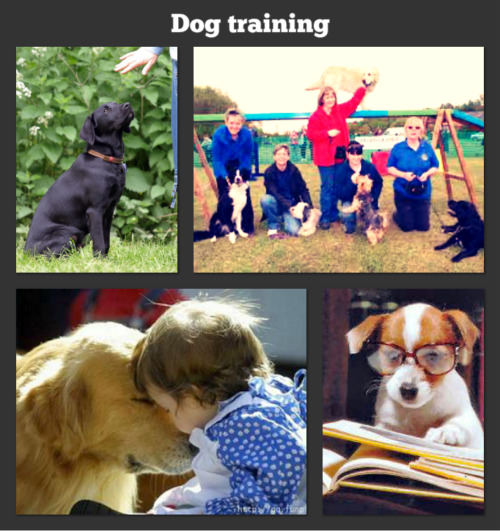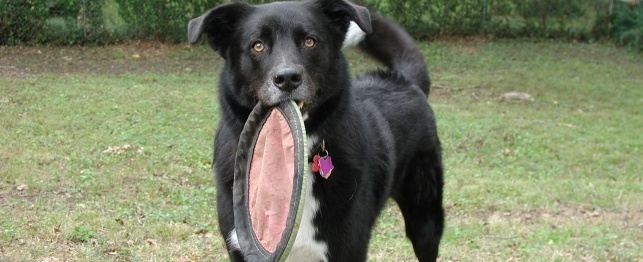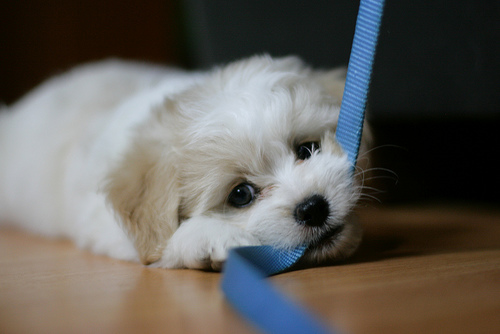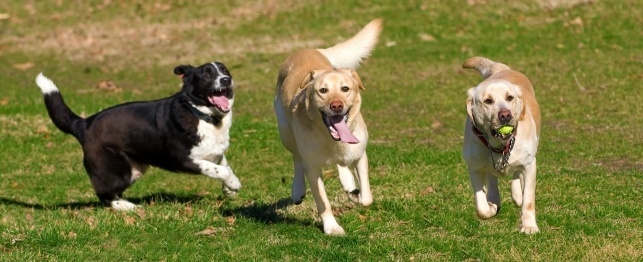Dog owners all over the world want their canine pets to be trained. This of course not only to make sure that they obey their masters, but more importantly to keep the dogs and the people they are with safe.
Unruly dogs, even if they do not attack persons, are hardest to have around. Especially the very playful ones who keep on running about digging up lawns, ruining flower beds and wrecking gardens.
This is why dog training is an important process for the dogs and their owners. The problem of course, lies in the language that is used.
Dogs do not obviously understand words the way humans do. Training then, involves a series of commands that are coupled with a gesture. First, start with the basics.
The fundamentals of dog training are composed of six different elicited responses or behaviors. These are: sit, stay, down, close (for your dog to keep close to you when walking loose-leashed), heel, and recall (here, come).
These elicited responses can be instilled to the dog by four different types of learning strategies. These strategies are:
Rewarding after a correct behavior is done, rewarding after a continued correct behavior, not rewarding for wrong behavior, and punishing for wrong behavior.
When dog training, it is important that you use the same gestures or signals for a particular behavior throughout. Additionally, the learning strategy you will use should also be consistent.
Dogs learn through repetition so if you use different signals and strategies, you will just confuse your dog. Secondly, remember it pays to be patient!
Expect to consume a lot of time in training your dog. Dogs may not be able to consistently follow commands that you have already taught in a different environment even if it does call for the same behavior.
For instance, commanding or signaling your dog to come to you might be hard if you only taught him that response inside your home.
There are different elements outside and your dog might get confused and distracted by these.
Rewarding your dog reinforces the different behaviors you want to elicit from your dog. Dog trainers favor positive reinforcement over negative reinforcement or punishment.
Positive reinforcement is a school of thought that uses rewards to strengthen good behavior instead of punishment to weaken bad behavior.
Positive reinforcement can be done through a lot of things that your dog enjoys.
This may be food, play, or just your undivided attention and praise. Even a scratch behind the ear is considered positive reinforcement.
You have to try and distinguish which of these reactions would make the dog happier to keep trying and learning commands.
Once you have recognized what reinforcement your dog wants, you can use that to ensure the behavior you want from him sticks.
Other dog trainers think that sometimes a bad behavior merits a punishment, like taking away a favorite chew toy, or physically punishing the dog.
However, this does not sit well with a lot of dog owners. Besides, if positive reinforcement already works, then why go to punishing?
Sometimes, harsh ways in training may lead the dog to be defensive and easily irritated.
This in turn makes them growl and snap at the slightest stroke or contact and that is the last thing you want to do.

 How To Use Vibration Dog Training Collars
All dogs need training at least, no matter how smart the do
How To Use Vibration Dog Training Collars
All dogs need training at least, no matter how smart the do
 Safe Fetch Toys for Your Dog
Safe Fetch Toys for Your Dog
Safe Fetch Toys for Your Dog
Safe Fetch Toys for Your Dog
 Teaching Your Dog Polite Leash Skills - Canine Manners 101 Dog Training Series
Teaching Your Dog Polite Leash Skills
This article i
Teaching Your Dog Polite Leash Skills - Canine Manners 101 Dog Training Series
Teaching Your Dog Polite Leash Skills
This article i
 Tips for Keeping Your Dog Safe at the Dog Park
Tips for Keeping Your Dog Safe at the Dog Par
Tips for Keeping Your Dog Safe at the Dog Park
Tips for Keeping Your Dog Safe at the Dog Par
 Does Your Dog Need More Exercise?
Does Your Dog Need More Exercise?
Does Your Dog Need More Exercise?
Does Your Dog Need More Exercise?